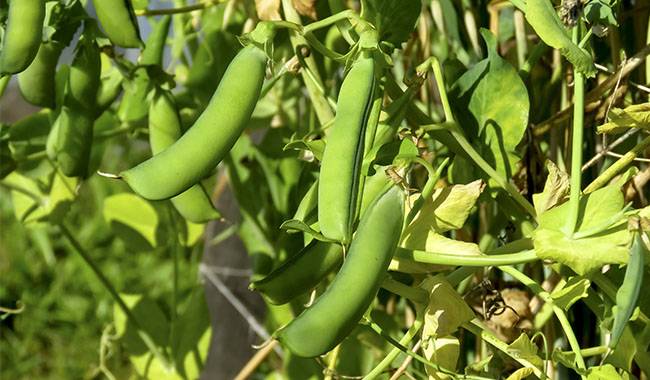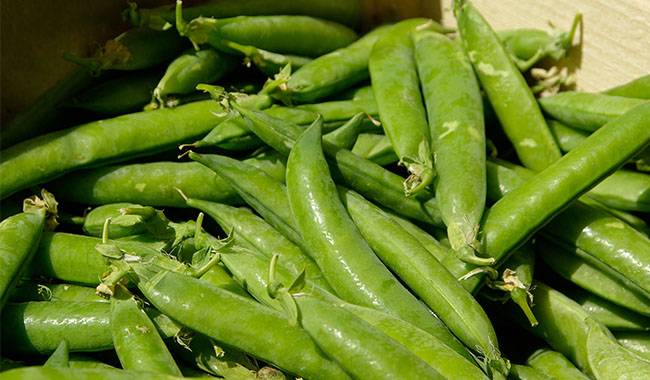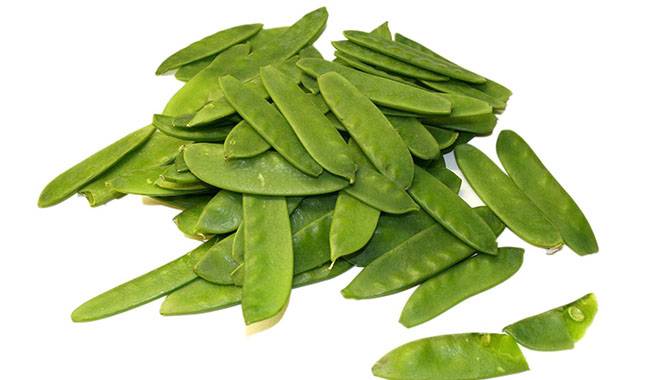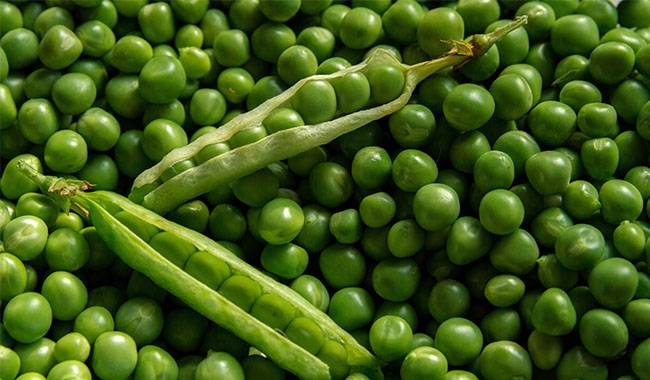
Vegetable crops like peas can be found in almost every vegetable garden. But what do we know about them? It belongs to the legume family, tends to accumulate nitrogen on its tubers, and prefers to cling to its supports with its tendrils. That’s it. However, this culture is not as primitive as it may seem at first glance, so it is worth growing peas and experimenting with them. In this article, you will learn how to plant peas and grow and care for them.
WHAT ARE PEAS?
When considering growing peas, it is worth noting that they are annuals with a simple or branched stem capable of reaching a length of 8.2 feet (2.5 meters). Some pea varieties are bushy (or curved), and others are sloping. Fruits also vary in shape, size, and color. But the most exciting thing for us gardeners is that peas can be divided into Garden Peas, Snow Peas, and Sugar Snap Peas.
Garden Peas

Also known as English peas, shelling peas, and green peas, Garden Peas do not have edible pods; you must wait until they are fully ripe before shelling them to eat. Shelling peas are among the fastest maturing types of peas, with smaller bush varieties maturing in about 50 days.
USDA growing zone: 2 to 9
Sun Exposure. Full to partial sun
Soil Requirements. Clay soils
Snow Peas

Snow Peas, often called Chinese pea pods, have flattened edible pods; the seeds are not allowed to be filled out before harvesting. Although you don’t have to wait for the peas inside to be full, Snow Peas tend to have the longest maturity period of all peas, especially the taller varieties.
USDA growing zone: 2 to 9
Sun exposure. Full to partial sun
Soil requirements. Drier, nutrient-rich soils
Sugar Snap Peas

Sugar Snap Peas are a cross between Garden Peas and Snow Peas. Like Garden Peas, the peas are allowed to be slightly plumper and rounder. However, the pods are crisp and edible, so they do not need to be shelled and are used in the same way as Snow Peas in recipes. Sugar Snap Peas are grown the same way as Garden Peas, but they tend to live a little longer when the weather gets warmer.
USDA Growing Zone: 3 to 11
Sun Exposure. Full to partial sun
Soil Requirements. Well-drained clayey soil
We should also know that depending on the shape of the seeds. They can be round, cylindrical, oval, flat, and concave. They can be divided into wrinkled and round seeds according to the epidermis, and the surface is also divided into wrinkled or smooth. Sugar Snap Peas have the highest sucrose content (up to 9%) and are among the highest quality canned and frozen peas.
They vary in their degree of earliness and resistance to cold temperatures. If you want to harvest your peas early, you should consider ultra-early ripening varieties with smooth veins. They are very tolerant of unfavorable conditions and can be sown as early as February. Also, their shoots emerge on the soil surface as early as 39-44 °F (4-7 °C) and may survive frosts as low as 21 °F (-6 °C).
If you want your peas to be bigger and sweeter, you should choose stout varieties. They have different maturity periods and can be sown so that they can be harvested throughout the summer. In general, peas are divided into extra early, early maturing, and mainstream and late harvesting varieties.
HOW TO PLANT PEAS?
Before talking about getting peas all summer long, it’s worth remembering that this crop has its cultivation techniques.
Preparing for planting
The first of these is to check the seeds of the peas. Because the seeds of legumes are attacked by pests and are often sold damaged, they should be soaked before planting. This simple method will not only help identify non-viable peas and prevent unwanted “invaders” from multiplying in your garden, but it will also promote seed germination. However, you should not wait for the roots to emerge; only healthy pea seeds with no visible signs of pests under the skin should be planted in the soil.
Planting peas in a vacant lot
Second. Peas are not afraid of cold weather, and some pea varieties can be sown in frozen soil, while Sugar Snap Peas varieties are sown later in the season, usually in late April or early May (depending on the climate zone). But don’t wait for high temperatures, as the buds of this crop do not tolerate heat and can be upset by the large number of leaves that fall.
Third. Peas should be planted in a well-lit place. Sowing should be done on a two-row basis, leaving about 20 inches (50 cm) between rows, about 15 inches (40 cm) between rows for Sugar Snap Peas varieties, and about 8 inches (20 cm) between rows for stout types. In this case, seeds can be closely spaced in the rows at 2 inches (5 cm) apart because peas are one of the few plants that benefit from overgrowth that provides greater plant stability and some shade to the root system. Seeds are placed at a depth of 1 inch (2.5 cm) on heavy soils and up to 2 inches (5 cm) on light soils.
To extend the harvest period of peas, first, seeds should be sown in 10-day increments (until the end of May). Second, varieties with different maturity stages should be selected. And third, the crop should be watered and mulched at the right time during hot weather, as higher temperatures combined with lack of moisture can tire the plants and greatly reduce pod size and yield quality.
CARING FOR PEAS
There are also watering requirements. Peas need the most water during flowering, so they should be watered at least twice a week or more frequently, depending on weather conditions. Before flowering, irrigation can be infrequent but abundant, once every seven days. After watering and heavy rains, be sure to loosen the rows between the peas to enrich the soil with oxygen. And of course, fertilizer should not be forgotten – here, cowpea fertilizer is probably the best choice.
Thoughtful plant support also plays an important role in improving yields. This can be achieved firstly by dense planting, secondly by companion crops, and thirdly by providing special supports made of lattices, branches, or sticks. This provides a natural growth rate for the peas and helps them feel at ease, which impacts their yield.
And, of course, there is a rule of thumb. To keep your peas from getting in the way of pod formation, you need to harvest them at the right time. You can do this with scissors or gently pluck the pods with your fingernails, but please don’t wait for the pods to ripen before you pluck them fully!
VARIETIES OF PEAS
We have tried several different varieties of peas and have our favorite. We encourage you to try several different peas to find out which one you like best. Here is a list of some common varieties of peas, along with descriptions of the plants and pods, etc.
Varieties of Garden Peas
These are the traditional varieties of peas where the pods are not edible, and the peas must be removed from the pods before consumption.
- Garden Sweet – This variety has exceptionally sweet peas that mature in 75 days, with pods averaging 3 1/2 inches long and containing 9-10 medium-sized peas per pod, making it one of the best-tasting garden peas varieties.
- Mr. Big – This award-winning variety matures in 60 days, has dark green pods, averages 9-10 extra-large peas per pod, grows to 4 feet tall, and is moderately sweet.
- Spring – This variety matures in 60 days, has a moderate flavor, is very productive, has many pods per plant, averages 6-7 plump green peas per pod, and has vines up to 2 feet tall.
- Survivor – This pea variety is an almost leafless plant with very stout vines clinging together. Plants reach 2 feet tall, an average of 8 peas per pod, mature in 70 days, and are moderately sweet.
- Thomas Laxton – This variety matures in 60 days, pods average 8-9 large dark green peas, very full, pods average 4 inches long, vines reach 3 feet tall, moderately sweet.
- Wando – This variety is very popular, tolerates warm and cold weather well, matures in 70 days, dark green pods average 7-8 medium-sized peas each, freezes or dries well, moderately sweet, plants up to 2.5 feet tall, good choice for fall pea crops
- Early Perfection – This variety features crescent-shaped pods averaging 3 1/2″ long, pods average 8-9 tender peas, medium-sized peas, sweet flavor, drought-resistant, prolific, and matures in 65 days.
- Maestro – This pea variety matures in 60 days, is prolific, dark green pods average 4 1/2″ long with an average of 10-11 medium-sized peas per pod, moderately sweet, and a good choice for fall crops.
- Little Marvel – This variety has planted up to 2 feet tall, pods are averaging 3 feet long, and each pod contains 7-8 medium-sized peas that are sweet and tender and mature in 65 days.
- Misty Shell – This variety matures in 60 days, pods average 3 inches long, dwarf plants reach 20 inches tall, disease-resistant, sweet, and plump peas, each pod contains 7-8 peas, high yield.
Varieties of Snow Peas
These varieties have flat pods, are sweet and edible, and the peas are tiny and can be eaten raw or cooked for a traditional stir-fry.
- Oregon Sugar Pods – This variety matures in 70 days, is prolific, has planted up to 2 1/2 feet tall, pods average 4 1/2 inches long, is disease resistant, and is very sweet and tender.
- Mammoth Melting Sugar – This heirloom variety features very tall vines that can reach 4-5 feet tall, matures in 70 days, huge pods averaging 5 1/2 inches long, thick pods that will stand up well to longer cooking methods, and a sweet flavor.
- Oregon Sugar Pod #2 – This variety matures in 70 days, pods average 4 inches long, plants up to 2 1/2 feet tall, prolific, good disease resistance, usually 2 pods per group, very sweet, and tasty.
- Avalanche – This snow pea variety produces huge dark green pods up to 6 inches in length, sweet and tender, matures in 60 days, is disease-resistant, prolific, and plants up to 3 feet tall.
- Snowbird – This variety matures in 60 days, has short plants, is only 18 inches tall, pods averaging 3 inches long, is prolific, pods come in groups of 2-3 on the plant, and is moderately sweet.
- Gray Sugar – this variety matures in 65 days, traditional snow pea, pods average 3 inches long, plants are up to 18 inches tall, moderately sweet.
- Sugar Daddy – This variety of peas features vines up to 2 feet tall, matures in 75 days, good disease resistance, pods are averaging 3 inches long, and high sweetness and sweetness.
Varieties of Sugar Snap Peas
These varieties of peas have an edible pod, tend to be very sweet, can be eaten raw or cooked, and are generally plump and round.
- Sugar Snap – This award-winning variety has 3 inch long pods, is very sweet, and is a typical sugar snap variety with vines up to 6 feet tall and prolific.
- Super Snappy – This variety of peas is only available from Burpee Seeds, huge pods mature in 65 days, exceptionally sweet and crisp with an average of 9 peas per pod, vines reach 3 feet tall, and has some disease resistance.
- Super Sugar Snap VP – This pea variety matures in 65 days, is sweeter and more prolific than the original sugar snap variety, is very disease resistant, plants up to 5-6 feet tall, and has an average of 3 inch long pods.
- Sugar Ann – This variety of pea matures in 55 days, is very sweet and crisp, plants reach 2 feet tall, is disease resistant, and averages 7 pods each.
- Sugar Bon – This variety of pea matures in 55 days, very sweet pods average 3 inches long, plants reach 2 feet tall, and disease-resistant.
We hope you enjoy learning about the different varieties of peas. They taste perfect if you grow them yourself. You can leave us any ideas you have in the comments section.



